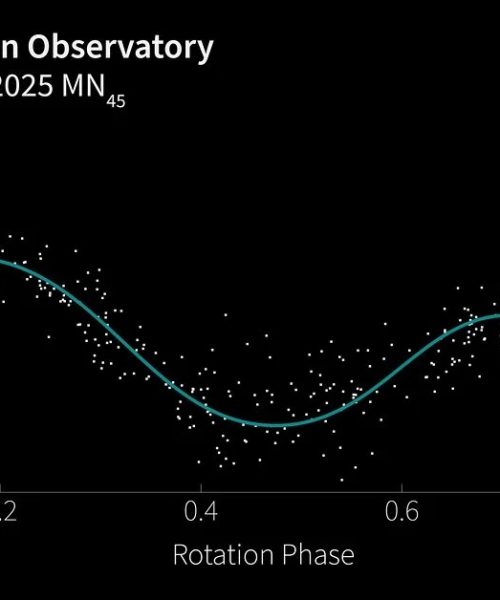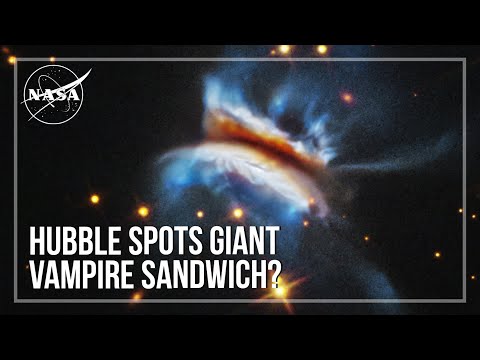Some stars are so primed for greatness that they blow up twice. For the first time, a team of astronomers have found direct visual evidence of a star that met its fiery end by detonating two times. The team using the European Southern Observatory’s Very Large Telescope (ESO’s VLT) found this double explosion in the centuries-old remains of a supernova designated as SNR 0509-67.5. They found patterns that confirm its star suffered two explosive blasts. The findings are detailed in a study published July 2 in the journal Nature Astronomy and offers a new look at some of the universe’s most important explosions.
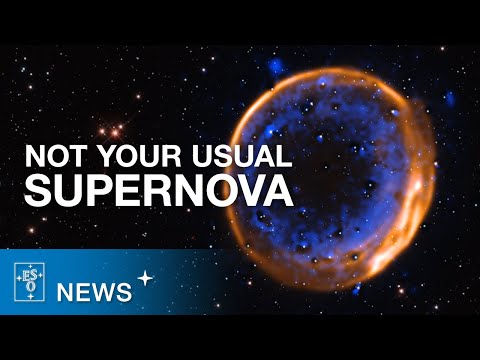
What are Type Ia supernovae?
The majority of the universe’s supernovae are the explosive deaths of massive stars. One important supernova variety comes from an unassuming source–white dwarfs. These celestial bodies are the small, inactive cores left over after larger stars–similar to our sun–burn out of all their nuclear fuel. White dwarfs can also produce what astronomers call a Type Ia supernova.
“The explosions of white dwarfs play a crucial role in astronomy,” said Priyam Das, a study co-author and PhD student at the University of New South Wales Canberra, Australia. “Yet, despite their importance, the long-standing puzzle of the exact mechanism triggering their explosion remains unsolved.”
A great deal of our knowledge of how the universe expands rests on understanding Type Ia supernovae. These types of supernovae are a primary source of Earth’s iron–including the iron pumping around in your blood right now.
Type Ia supernovae generally start with a white dwarf that is one star in a pair. If the other star orbits close enough, the dwarf can steal material from its partner. In the most established theory behind Type Ia supernovae, the white dwarf grabs matter from its companion–until it reaches a critical mass. Then, it’s time for a single, great, fiery explosion. However, recent studies have hinted some Type Ia supernovae may be better explained by a double explosion that is triggered before the star reaches this critical mass.
[ Related: Astronomers find spiraling stars heading towards a rare cosmic explosion. ]
Seeing of double trouble
The supernova in this new study–SNR 0509-67.5–is roughly 160,000 light-years away from Earth in the constellation Dorado. The astronomers describe a new image they took with data from the ESO’s VLT that proves this hunch about double explosions was correct. Some Type Ia supernovae explode through a “double-detonation” mechanism rather than just one. In this new model, the white dwarf forms a blanket of stolen helium around itself. Helium is a chemical element that can become unstable and ignite. If that happens, the initial explosion generates a shockwave that travels around the white dwarf and inwards. This triggers a second detonation in the core of the star, which ultimately forms the supernova.
Previously, there has been no clear, visual evidence of a white dwarf undergoing a double detonation. Astronomers have predicted that this process would create a distinct pattern or fingerprint seen in the supernova’s still-glowing remains. They theorized that this clue would be visible long after the initial explosion, partially because the remnants of such a supernova would have two separate shells of calcium.
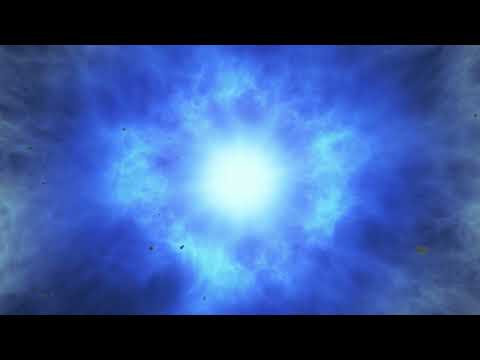
Astronomers have now found this kind of calcium fingerprint in a supernova’s remains. According to Ivo Seitenzahl, a study co-author and nuclear astrophysicist from Germany’s Heidelberg Institute for Theoretical Studies, these results show “a clear indication that white dwarfs can explode well before they reach the famous Chandrasekhar mass limit, and that the ‘double-detonation’ mechanism does indeed occur in nature.”
The team detected these calcium layers–shown in blue in the image–by observing supernova remnant SNR 0509-67.5 with the Multi Unit Spectroscopic Explorer (MUSE) on ESO’s VLT. The findings provide strong evidence that a Type Ia supernova can feasibly occur before its parent white dwarf reaches a critical mass.
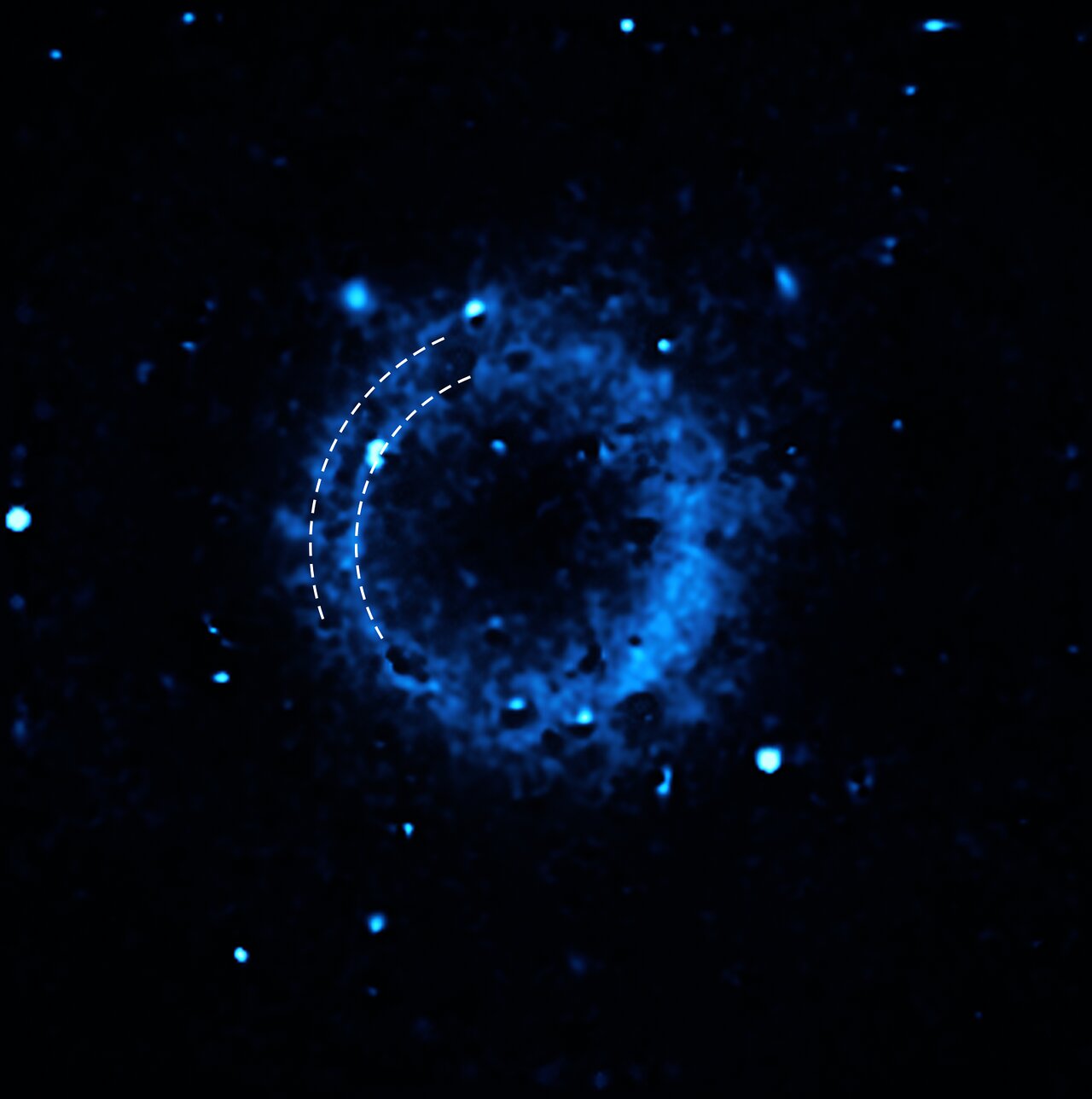
ESO/P. Das et al.
Cosmic measuring tape
Type Ia supernovae are also important for astronomers because they behave in very consistent ways and have predictable brightness–no matter how far away they are. This level of consistency helps astronomers measure distances in space. While using Type Ia supernovae as a cosmic measuring tape, astronomers discovered the accelerating expansion of the universe. The team behind this groundbreaking discovery was awarded the Physics Nobel Prize in 2011. Studying how these supernovae explode will help us understand why they have such a predictable and consistent brightness.
“This tangible evidence of a double-detonation not only contributes towards solving a long-standing mystery, but also offers a visual spectacle,” said Das, describing the “beautifully layered structure” that a supernova creates. “Revealing the inner workings of such a spectacular cosmic explosion is incredibly rewarding.”


